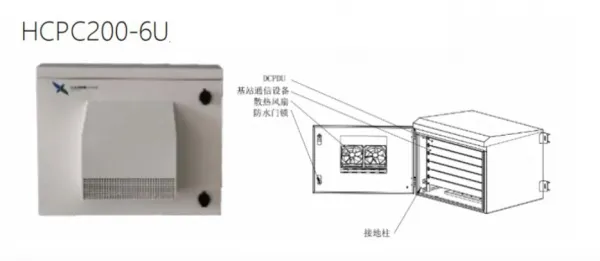Understanding the Foundation of Modern Wireless Communications
In our increasingly connected world, base stations serve as the backbone of wireless communications, enabling everything from mobile phone calls to internet connectivity. These critical infrastructure components act as the bridge between wireless devices and the broader telecommunications network. Whether you're making a call, sending a text, or browsing the internet on your smartphone, a base station is working behind the scenes to make it all possible.
A base station consists of various electronic components, including transmitters, receivers, antennas, and signal processors, all working together to facilitate wireless communications. These technological marvels have transformed how we stay connected, making seamless wireless communication a reality for billions of people worldwide.
Core Components of Base Station Technology
Essential Hardware Elements
At the heart of every base station lies sophisticated hardware that enables wireless communication. The main components include radio units that transmit and receive signals, baseband units that process digital signals, and antenna systems that broadcast and capture radio waves. These elements work in perfect harmony to ensure reliable wireless connectivity.
Power systems and cooling mechanisms are equally crucial components, ensuring the base station operates continuously and efficiently. Backup power supplies guarantee uninterrupted service during power outages, while advanced cooling systems prevent equipment overheating in various weather conditions.
Software and Control Systems
Modern base stations rely heavily on advanced software systems to manage network traffic, optimize performance, and maintain service quality. Network management software monitors signal strength, manages handovers between cells, and balances network load to prevent congestion.
Control systems within the base station coordinate with the broader network infrastructure, implementing protocols and standards that ensure compatible communication across different devices and technologies. These systems continuously adapt to changing network conditions and user demands.
Types of Base Stations and Their Applications
Macro Base Stations
Macro base stations are the largest and most powerful type, typically mounted on tall towers or buildings to provide widespread coverage. These stations can serve thousands of users simultaneously and cover areas spanning several kilometers. Their high-power transmitters and sophisticated antenna arrays make them ideal for both urban and rural environments.
Despite their higher installation and maintenance costs, macro base stations remain essential for providing the foundation of cellular networks, especially in areas with high user density or challenging terrain.
Small Cell Base Stations
Small cell base stations complement macro stations by providing focused coverage in specific areas. These compact units are perfect for urban environments, indoor spaces, and areas with high data demand. Their smaller size and lower power requirements make them ideal for improving network capacity and coverage in targeted locations.
The deployment of small cell base stations has become increasingly important with the roll-out of 5G networks, as they help deliver the high-speed, low-latency connections required for next-generation wireless services.
Installation and Maintenance Considerations
Site Selection and Planning
Choosing the right location for a base station requires careful consideration of multiple factors. Engineers must analyze population density, terrain features, existing coverage patterns, and potential interference sources. Environmental impact assessments and local regulations also play crucial roles in site selection.
The planning phase includes detailed studies of signal propagation, capacity requirements, and future growth projections. This ensures the base station will effectively serve its intended purpose while maintaining compliance with regulatory standards.
Regular Maintenance Requirements
Maintaining a base station involves regular inspections, performance monitoring, and preventive maintenance procedures. Technicians must check physical components for wear and tear, verify signal quality, and ensure all systems operate within specified parameters.
Software updates and security patches are also essential aspects of maintenance, protecting the base station from cyber threats and ensuring optimal performance. Regular calibration of equipment helps maintain service quality and prevent potential issues before they affect network operations.
Future Trends in Base Station Technology
Smart and Sustainable Solutions
The future of base station technology is moving towards more intelligent and environmentally sustainable solutions. AI-powered systems are being integrated to optimize power consumption, predict maintenance needs, and automatically adjust network parameters based on usage patterns.
Renewable energy sources, such as solar and wind power, are increasingly being utilized to power base stations, reducing their carbon footprint and operating costs. These sustainable approaches are becoming standard features in modern base station design.
Integration with Advanced Technologies
Base stations are evolving to support emerging technologies like Internet of Things (IoT) devices, autonomous vehicles, and smart city infrastructure. Advanced features such as beamforming, massive MIMO, and network slicing are being incorporated to enhance capacity and flexibility.
The integration of edge computing capabilities within base stations is enabling faster data processing and reduced latency, opening new possibilities for real-time applications and services.
Frequently Asked Questions
What is the typical range of a base station?
The range of a base station varies significantly depending on its type, power output, and environmental conditions. Macro base stations can cover several kilometers in ideal conditions, while small cell base stations typically cover a few hundred meters. Factors such as terrain, buildings, and weather can affect the actual coverage area.
How do base stations handle multiple users simultaneously?
Base stations use sophisticated multiplexing techniques and channel allocation algorithms to manage multiple connections simultaneously. Through methods like TDMA (Time Division Multiple Access), FDMA (Frequency Division Multiple Access), and CDMA (Code Division Multiple Access), they can efficiently share available bandwidth among numerous users while maintaining service quality.
Are base stations safe for nearby residents?
Base stations are designed and operated within strict safety guidelines established by international regulatory bodies. The radio frequency emissions from properly installed and maintained base stations fall well below safety limits. Multiple studies have shown that exposure to RF signals from base stations operating within these guidelines poses no known health risks to nearby residents.

